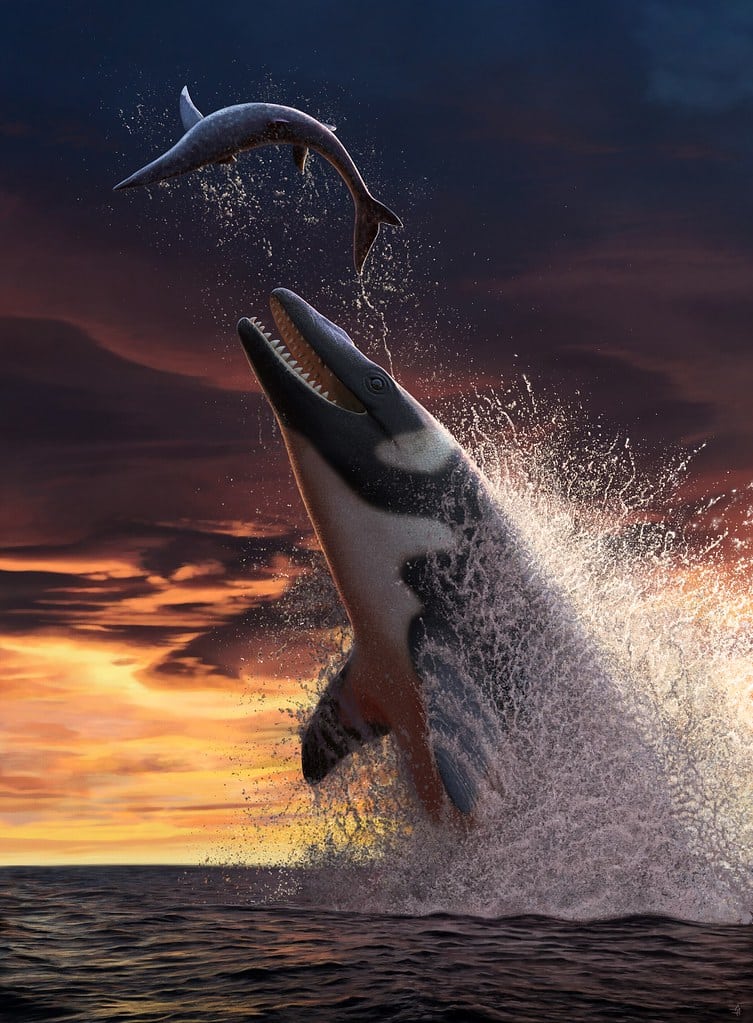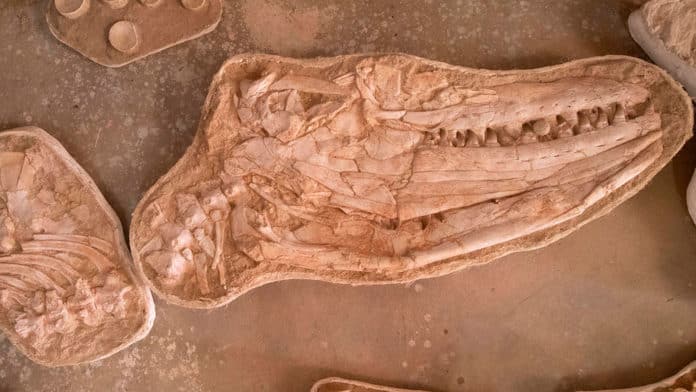Almost 66 million years ago, the mosasaurs, giant marine reptiles, ruled the seas. Recently, scientists discovered fossils of a giant killer mosasaur along with the fossilized remains of its prey. The newly discovered mosasaur from Morocco, named Thalassotitan atrox, had massive jaws and teeth like those of killer whales.
Scientists from the University of Bath discovered the remains in Morocco, about an hour outside Casablanca. Thalassotitan had an enormous skull measuring 1.4 meters (5 feet long) and grew to nearly 30 feet (9 meters) long, the size of a killer whale. Unlike other mosasaurs that had long jaws and slender teeth for catching fish, Thalassotitan had a short, broad muzzle and massive, conical teeth like those of an orca.
These adaptations imply that Thalassotitan occupied the top position in the food chain as an apex predator. Today’s killer whale and great white shark share the same ecological niche as the enormous mosasaur.
Although the teeth of a thalassotitan are frequently broken and worn, such attrition would not have resulted from eating fish. This, instead, shows that the enormous mosasaur attacked other marine reptiles, biting into their bones and tearing them apart while chipping, fracturing, and grinding their teeth. Some teeth have sustained such severe destruction that the roots have nearly completely been exposed.
Scientists also revealed the possible remains of Thalassotitan’s victims. The teeth and bones in the fossils from the same layers have been eaten away by acids. Large predatory fish, a sea turtle, a plesiosaur head that is half a meter long, and the jaws and skulls of at least three different mosasaur species are among the fossils that have this unusual damage. Before Thalassotitan spat out its bones, their stomach would have broken them down for digestion.

Dr. Nick Longrich, Senior Lecturer from the Milner Centre for Evolution at the University of Bath, said, “It’s circumstantial evidence.”
“We can’t say for certain which species of animal ate all these other mosasaurs. But we have the bones of marine reptiles killed and eaten by a large predator. And in the same location, we find Thalassotitan, a species that fits the killer’s profile – it’s a mosasaur specialized in preying on other marine reptiles. That’s probably not a coincidence.”
Everything in the waters, even other Thalassotitan, was at risk from Thalassotitan. The enormous mosasaurs have facial and jaw injuries from fighting other mosasaurs, which they did brutally. Similar wounds are present in other mosasaurs, but Thalassotitan has an unusually high frequency of these scars, indicating frequent, violent conflicts for mates or eating sites.
Dr. Longrich said, “Thalassotitan was an amazing, terrifying animal. Imagine a Komodo Dragon with a great white shark crossed with a T. rex crossed with a killer whale.”
The new mosasaur lived in the final million years of the Age of Dinosaurs, a contemporary of animals like T. rex and Triceratops. Recent discoveries of mosasaurs from Morocco suggest that they weren’t in decline before the asteroid impact that drove the Cretaceous mass extinction. Instead, they flourished.
Professor Nour-Eddine Jalil, a co-author of the paper from the Museum of Natural History in Paris, said: “The phosphate fossils of Morocco offer an unparalleled window on the paleobiodiversity at the end of Cretaceous.
“They tell us how life was rich and diversified just before the end of the ‘dinosaur era,’ where animals had to specialize in having a place in their ecosystems. Thalassotitan completes the picture by taking on the role of the mega predator at the top of the food chain.”
“There’s so much more to be done. Morocco has one of the richest and most diverse marine faunas known from the Cretaceous. We’re just getting started understanding the mosasaurs’ diversity and biology.”
Journal Reference:
- Nicholas R.Longrich et al. Thalassotitan atrox, a giant predatory mosasaurid (Squamata) from the Upper Maastrichtian Phosphates of Morocco. Cretaceous Research. DOI: 10.1016/j.cretres.2022.105315
